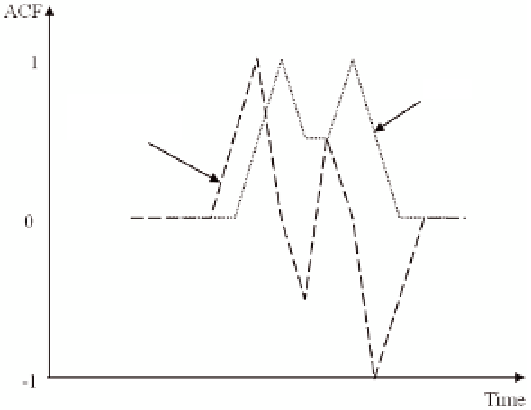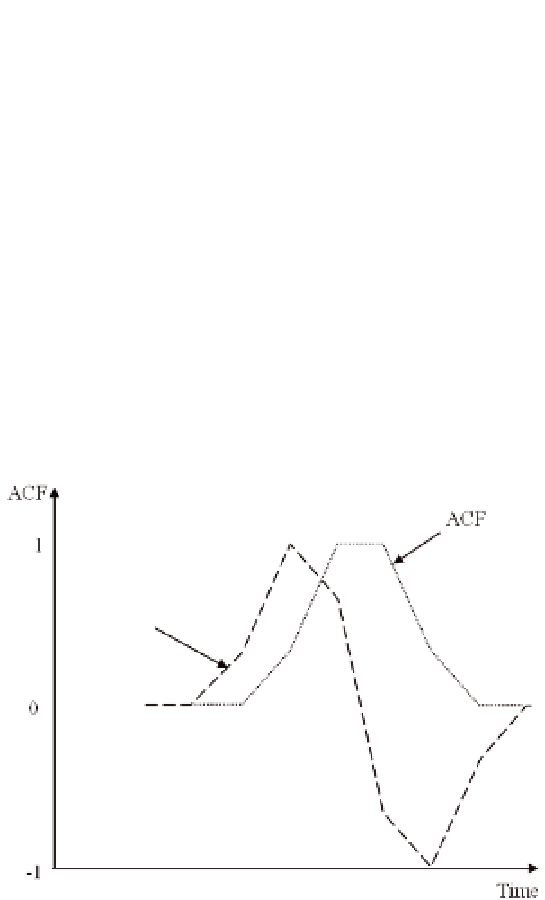Global Positioning System Reference
In-Depth Information
ACF
1
ACF
Early-Late
discriminator
0
-1
Time
Fig. 8. Typical autocorrelation function for a large delayed multipath
ACF
ACF
1
Early-Late
discriminator
0
-1
Time
Fig. 9. Typical autocorrelation function for a small delayed multipath
Indoors, reflected path have delays that are indeed much smaller. In such a case, the ACF is
completely disturbed (see figure 9) and can take many different shapes. The problem is now
that the receiver will be fooled when detecting the maximum of the ACF which is no longer
at the time of arrival of the direct path. Note also that this maximum now depends on the
relative phases, delays and amplitudes of the direct and reflected paths.
The classical way this multipath effect is characterised is given in figure 10. This curve allows
the comparison of various multipath mitigation techniques, as illustrated in figure 10 for the
Standard Digital Locked Loop (SDLL) and the so-called Narrow Correlator (NC). Note the
reading of the figure: considering a direct path and a single reflected path of amplitude half
that of the direct path (only suitable for comparison purposes and certainly not for











Search WWH ::

Custom Search